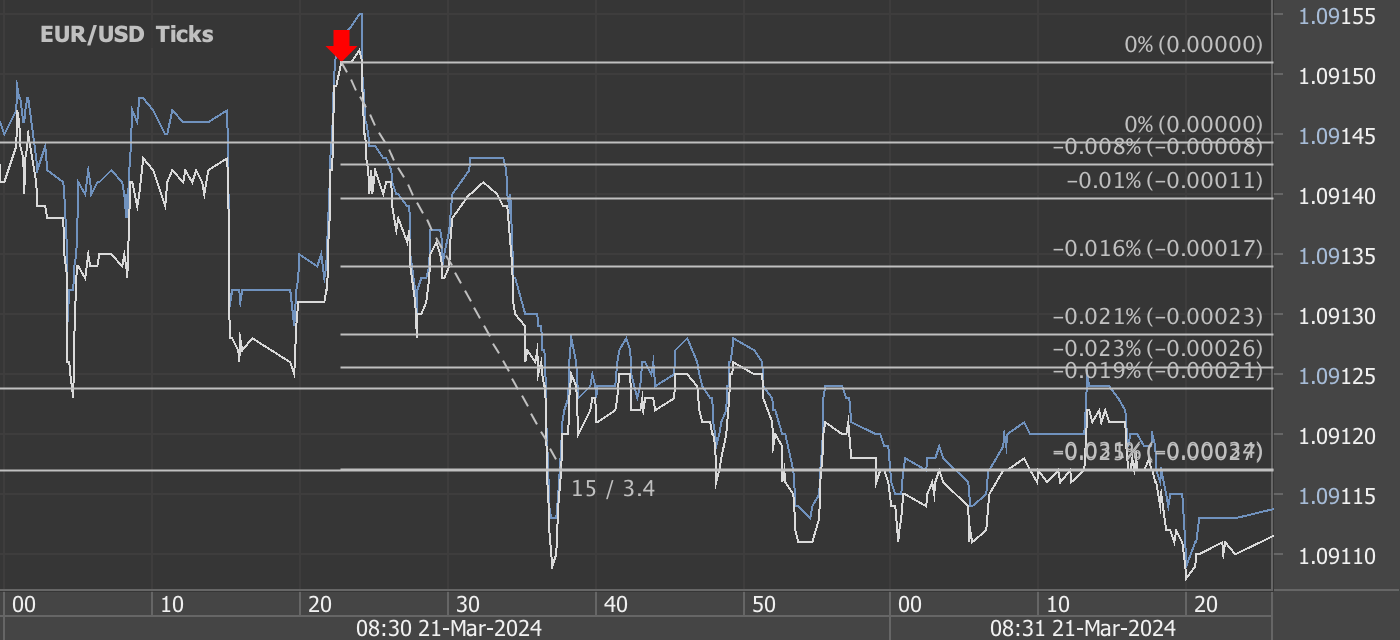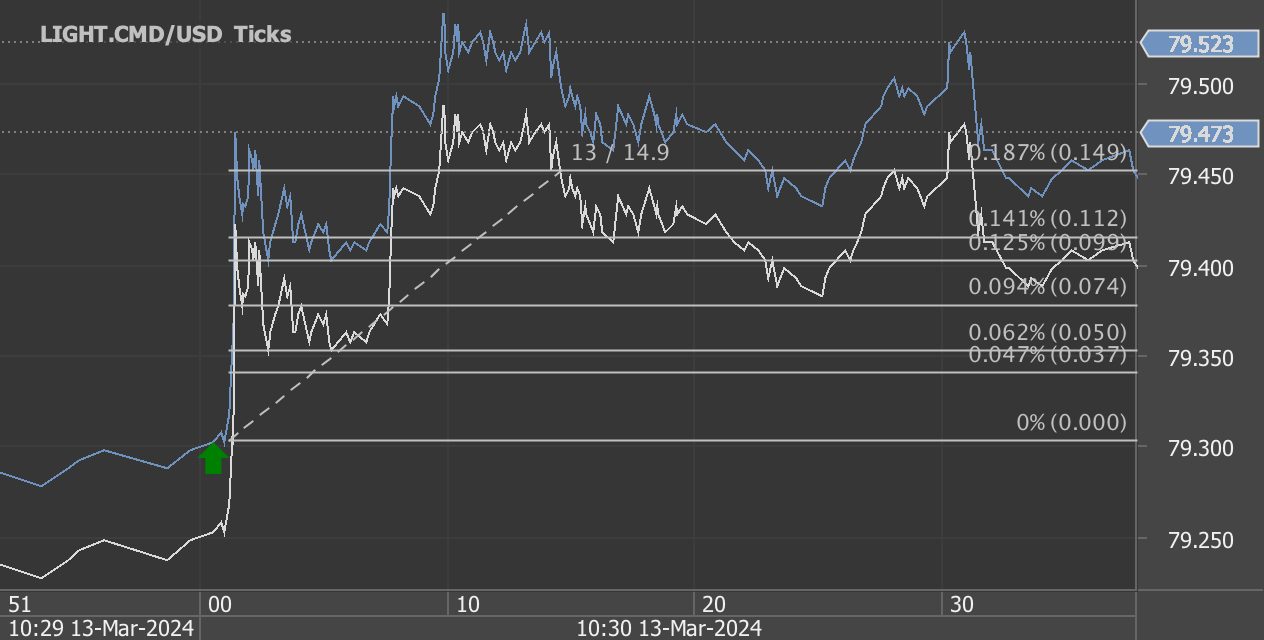According to our analysis USDJPY and EURUSD moved 57 pips on US BLS CPI (Consumer Price Index) data on 10 April 2024.
USDJPY (25 pips)
EURUSD (32 pips)
Charts are exported from JForex (Dukascopy).
March 2024 Consumer Price Index Summary
The latest report from the U.S. Bureau of Labor Statistics on the Consumer Price Index (CPI) for March 2024 sheds light on current economic conditions, indicating both continuity and change in the inflation landscape. As consumers and analysts alike scrutinize these figures, it's crucial to unpack the nuances of the data to understand its implications for the economy, businesses, and everyday Americans.
CPI Overview for March 2024
In March 2024, the CPI for All Urban Consumers (CPI-U) experienced a 0.4 percent increase on a seasonally adjusted basis, mirroring the rise observed in February. Looking at the bigger picture, the all items index escalated by 3.5 percent over the last 12 months before seasonal adjustment, marking a notable trend in inflationary pressures.
The primary drivers of the monthly inflation increase were the shelter and gasoline indexes, which collectively contributed to more than half of the overall rise in the index for all items. Specifically, the energy index saw a 1.1 percent uplift, while food prices edged up by 0.1 percent. Notably, the food at home index remained stagnant, but the food away from home index climbed by 0.3 percent.
Key Components and Sectoral Impacts
Shelter and Energy: The shelter index continued its upward trajectory, alongside a significant 1.1 percent increase in the energy index. Gasoline prices, in particular, rose by 1.7 percent, reflecting broader energy market trends.
Food Index: The marginal 0.1 percent rise in the food index, coupled with a stable food at home index, suggests moderate food price inflation. However, the food away from home index's 0.3 percent increase points to costlier dining out experiences.
Core Inflation: Excluding food and energy, the core CPI rose by 0.4 percent for the third consecutive month. This consistent growth in core inflation underscores persistent inflationary pressures beyond volatile food and energy prices.
Yearly Inflation Trends
The 12-month overview reveals a 3.5 percent rise in the all items index, accelerating from the 3.2 percent increase ending February. Core inflation, excluding food and energy, climbed by 3.8 percent over the past year, indicating sustained inflationary pressure. Energy and food indexes rose by 2.1 percent and 2.2 percent, respectively, highlighting varied inflation dynamics across sectors.
Looking Ahead
The CPI data for March 2024 illustrates ongoing inflationary pressures within the U.S. economy, with significant contributions from shelter, energy, and certain food categories. While some sectors like used cars and trucks saw price decreases, the general trend indicates that inflation remains a concern.
For consumers, this means budgeting for higher costs in housing, energy, and dining out. Businesses, particularly in the energy, food service, and insurance sectors, will need to navigate these inflationary pressures carefully, balancing cost increases with consumer affordability.
As we move forward, monitoring these trends will be crucial for policymakers, businesses, and consumers alike to make informed decisions in an evolving economic landscape. The next CPI report, scheduled for release in May 2024, will be eagerly anticipated for further insights into inflationary trends and their potential implications.
Start futures forex fx news trading with Haawks G4A low latency machine-readable data, one of the fastest machine-readable news trading feed for US economic and commodity data.
Please let us know your feedback. If you are interested in timestamps, please send us an email to sales@haawks.com.















